| Item number | Description | Units per box |
|---|---|---|
| 186-0210 | BIS™ complete 2-channel monitoring system | 1 |
| 186-0195-AM | BIS™ LoC 2-channel monitor with patient interface cable | 1 |
| 186-0224-AMS | BIS™ LoC 4-channel monitoring system with patient interface cable | 1 |
| 536-0047 | Power cord 6′ (North America) | 1 |
Brain channel monitoring
BIS™ monitoring system
<p>The Bispectral Index™ (BIS™) monitoring system processes raw EEG information to provide a direct measurement of the patient’s level of consciousness.</p>
Features
BIS™ complete 4-channel and 2-channel monitors
The BIS™ monitor translates the raw EEG data into the easy-to-read BIS™ index.
Both 2-channel and 4-channel monitors provide:
- User-configurable display
- Versatile platform for future expandability
The 4-channel monitor provides:
- EEG monitoring
- Asymmetry indicator (ASYM)
- Ability to trend BIS™-left and BIS™-right values
See the evidence for the BIS™ proven algorithm.
Clinical evidence
Frequently asked questions
Bolus administration of intravenous anesthetic, recent changes in inhalation anesthesia, or administration of adjuvant agents (beta blockers, alpha 2 agonists) can all result in acute decrease in BIS™ monitoring numbers.
An abrupt change in the BIS™ may reflect a new cortical state relative to anesthetic dosing and changes in surgical conditions. High frequency artifacts (EMG, electrocautery or high frequency signals) may contaminate the EEG signal and bias the BIS™ toward a higher value. Additionally, the BIS™ may show a transient increase in response to noxious stimulation.
Prior to application of the sensor, make sure to wipe the skin with an alcohol pad and dry thoroughly. After applying the sensor, make sure to press the edges of the sensor to ensure adhesion. Circle all four elements/circles to seal in the gel. Press each element/circle for five seconds to ensure proper contact.
The percentage of epochs in the past 63 seconds in which the EEG signal is considered suppressed (0–100%). Burst count is the number of EEG bursts per minute, where a burst is defined as a short period of EEG activity preceded and followed by periods of inactivity — suppression (0–20).
The BIS™ system offers three choices of smoothing rates over which the BIS™ value is averaged. There are three default settings based on monitor mode. For monitor mode 1 and 4, the default setting is 15 seconds. For monitor mode 2, it is 30 seconds and monitor mode 3 is 10 seconds.
The BIS™ monitor is intended for use on adult and pediatric patients within a hospital or medical facility providing patient care to monitor the state of the brain by data acquisition of EED signals. It may be used to help guide anesthetic administration and may be associated with the reduction of the incidence of awareness with recall in adults during anesthesia and sedation.
This frequency range contains power from muscle activity — electromyography (EMG), as well as power from other high-frequency artifacts. When the BIS™ indicator bar is low, it indicates that EMG activity is low. BIS™ monitoring conditions are optimal when the bar is empty. One bar represents power in the 30–38 range; two bars represent power in the 39–47 range; three bars represent power in the 48–55 range, and four bars represent power greater than 55.
Observe for the presence of artifacts such as EMG, electrocautery or high frequency signals. High frequency artifacts, including those listed, may contaminate the EEG signal and bias the BIS™ monitor toward a higher value. Ensure that anesthetic delivery systems are operating properly so that the intended dose of anesthetic agent is reaching the patient. Changes in vaporizer setting, fresh gas flow rates, intravenous infusion pump setting, and intravenous delivery routes may account for a sudden change in level of anesthetic effect and the resulting BIS™ value. Ensure that the anesthetic dose is sufficient. An abrupt change in the BIS™ value may reflect a new cortical state relative to anesthetic dosing and changes in surgical conditions. Assess the current level of surgical stimulation. The BIS™ monitor may show a transient increase in response to increases in noxious stimulation.
If you push too hard and the zip prep breaks, the sensor may not work. Prep the skin by wiping with an alcohol pad and allow to dry thoroughly. Apply the sensor to the forehead. Starting with the first circle, center the sensor on the forehead, approximately 2 inches (5 cm) above the nose or 1.5 inches (4 cm) for a pediatric sensor. Place the fourth circle directly above and adjacent to the eyebrow. Place the third circle on either temple area between the corner of the eye and the hairline. Press the edges of the sensor to ensure adhesion. Circle all four elements/circles to seal the gel. Press each circle for five seconds to ensure proper contact. Use a fingertip to press each circle one at a time. Press firmly to adhere the sensor to skin.
The signal quality indicator (SQI) is a measure of the signal quality for the EEG channel source and is calculated based on impedance data, artifact, and other variables. It is displayed in the upper left corner of the screen, to the right of the BIS™ label. Signal quality is optimal when all five bars of the SQI icon are green. When signal quality is too low to accurately calculate a BIS™ value, the BIS™ value and other trend variables that are adversely affected by artifact, will not be displayed on the screen.
Ordering information
Resources
Related links
Related products
- Lewis SR, Pritchard MW, Fawcett LJ, Punjasawadwong Y. Bispectral index™ for improving intraoperative awareness and early postoperative recovery in adults. Cochrane Database Syst Rev. 2019;9:CD003843. doi:10.1002/14651858.CD003843.pub4.
- Zhang C, Xu L, Ma Y-Q, et al. Bispectral index™ monitoring prevent awareness during total intravenous anesthesia: a prospective, randomized, double-blinded, multi-center controlled trial. Chin Med J (Engl). 2011;124(22):3664–3669.
- Myles PS, Leslie K, McNeil J, Forbes A, Chan MT. Bispectral index™ monitoring to prevent awareness during anaesthesia: The B-Aware randomised controlled trial. Lancet. 2004;363(9423):1757-1763. doi:10.1016/S0140-6736(04)16300–9.
- Ekman A, Lindholm ML, Lennmarken C, Sandin R. Reduction in the incidence of awareness using BIS™ monitoring. Acta Anaesthesiol Scand. 2004;48(1):20-26. doi:10.1111/j.1399–6576.2004.00260.x.
- Punjasawadwong Y, Phongchiewboon A, Bunchungmongkol N. Bispectral index™ for improving anaesthetic delivery and postoperative recovery. Cochrane Database Syst Rev. 2014;(6):CD003843. doi:10.1002/14651858.CD003843.pub3.
- Luginbuhl M, Wuthrich S, Petersen-Felix S, Zbinden AM, Schnider TW. Different benefit of bispectal index™ (BIS™) in desflurane and propofol anesthesia. Acta Anaesthesiol Scand. 2003;47(2):165–73.
- Song D, Joshi GP, White PF. Titration of volatile anesthetics using bispectral index™ facilitates recovery after ambulatory anesthesia. Anesthesiology. 1997;87(4):842–848.
- Gan TJ, Glass PS, Windsor A, et al. Bispectral index™ monitoring allows faster emergence and improved recovery … . Anesthesiology. 1997;87(4):808–815. doi:10.1097/00000542-199710000-00014.
- Wong J, Song D, Blanshard H, Grady D, Chung F. Titration of isoflurane using BIS™ index improves early recovery of elderly patients undergoing orthopedic surgeries. Can J Anaesth. 2002;49(1):13–18. doi:10.1007/BF03020413.
- Punjasawadwong Y, Chau-In W, Laopaiboon M, Punjasawadwong S, Pin-On P. Processed electroencephalogram and evoked potential techniques for amelioration of postoperative delirium and cognitive dysfunction following non-cardiac and non-neurosurgical procedures in adults. Cochrane Database Syst Rev. 2018;5:CD01128.
- Chew WZ, Teoh WY, Sivanesan N, San Loh P, Shariffuddin II, Ti LK, Ng KT. Bispectral index™ (BIS™) monitoring and postoperative delirium in elderly patients undergoing surgery: A systematic review and meta-analysis with trial sequential analysis. J. Cardiothorac. Vasc. Anesth. 2022 1;36(12):4449–4459.
- Li X, Wang Y, Liu J, Xiong Y, Chen S, Han J, Xie W, Wu Q. Effects of perioperative interventions for preventing postoperative delirium: A protocol for systematic review and meta-analysis of randomized controlled trials. Medicine. 2021 7;100(29).
- Gao WW, He YH, Liu L, Yuan Q, Wang YF, Zhao B. BIS™ monitoring on intraoperative awareness: a meta-analysis. Current Medical Science. 2018;38(2):349–353.










